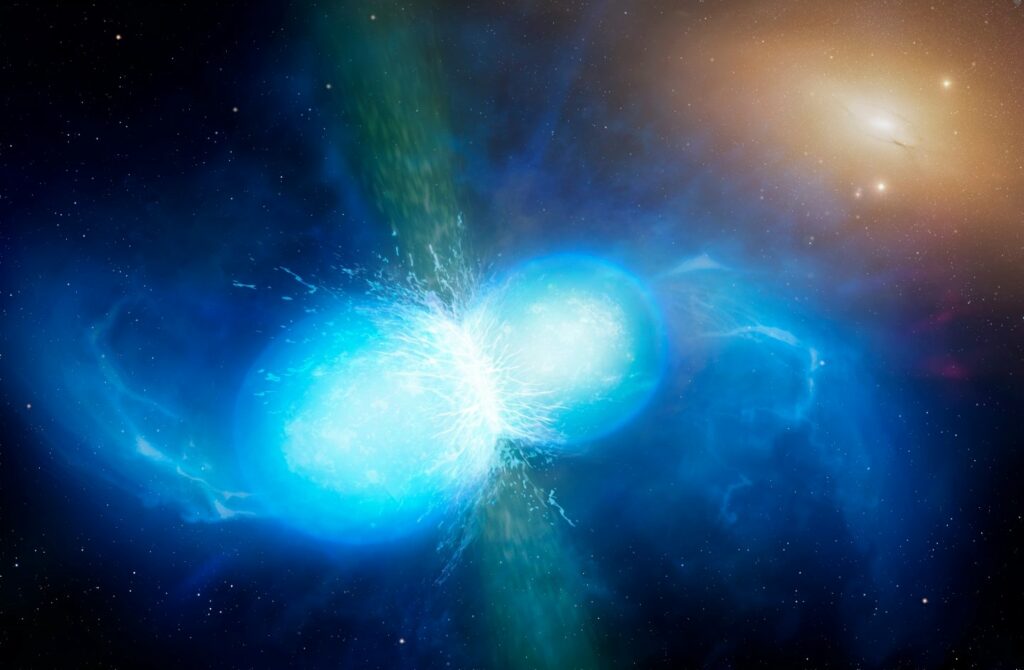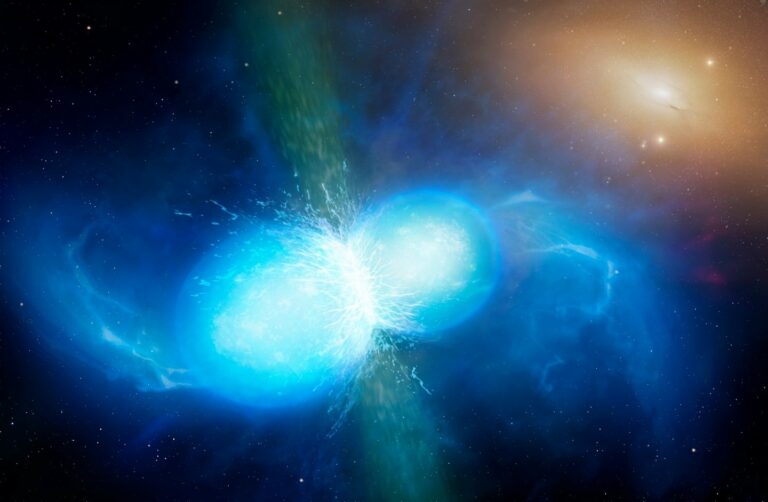Insights into Quark Matter Illuminated by Neutron Stars
Quark matter, an exceptionally dense state composed of subatomic particles known as quarks, is believed to potentially exist at the core of neutron stars. While it can also be generated momentarily in Earth’s particle colliders, such as CERN’s Large Hadron Collider, understanding the collective behavior of quark matter remains a challenge. In a recent colloquium at CERN, Aleksi Kurkela from CERN’s Theory department and the University of Stavanger, Norway, detailed how neutron-star data has enabled him and his colleagues to establish precise limits on the collective behavior of this extraordinary form of matter.
The team utilized a neutron-star property derived from the initial observation by the LIGO and Virgo scientific collaborations of gravitational waves—ripples in spacetime—resulting from the merger of two neutron stars. This property, technically referred to as tidal deformability, characterizes the stiffness of a star in response to gravitational stresses from a companion star.

Physicists often employ equations of state to describe the collective behavior of quark matter, relating the pressure of a state of matter to other properties. However, a unique equation of state for quark matter has yet to be formulated; researchers have only derived families of such equations. By incorporating tidal-deformability values from neutron stars observed by LIGO and Virgo into a derivation of a family of equations of state for neutron-star quark matter, Kurkela and his team significantly reduced the size of that equation family.
This reduction establishes more stringent constraints on the collective properties of quark matter and, more broadly, on nuclear matter at high densities compared to previous limits. With these findings, the researchers reversed the problem, utilizing quark-matter limits to infer neutron-star properties. Through this approach, they determined the relationship between the radius and mass of a neutron star, concluding that the maximum radius of a neutron star weighing 1.4 times the mass of the Sun should fall between approximately 10 and 14 km.
This article is republished from PhysORG under a Creative Commons license. Read the original article.
Do not forget to share your opinion with us to provide you with the best posts !




0 Comments